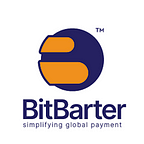A blockchain is a shared database that is distributed across the nodes within a computer network. Cryptocurrencies like Bitcoin and Ethereum leverage the technology to maintain secure and decentralised transaction records. Blockchain technology also powers innovations outside the finance sector. One caveat of blockchain technology is that it guarantees the veracity, security of recorded data and establishes trust without the need for a trusted third-party.
Unlike conventional electronic databases that structure data in tables, the blockchain bundles information together into chunks called blocks. Each block has a finite storage capacity and when filled, it is closed-up and chained to the previously filled block through cryptography. Together these blocks form a chain of data which is what’s referred to as a blockchain. Any information following the newly created block follows the same process of filling the next available block which also gets strung to the previously filled block. This data structure collectively forms an irreversible timeline of data, with each block carrying an exact time stamp when it’s added to the chain.
How does a Blockchain work?
The blockchain concept predates Bitcoin and cryptocurrency. First proposed in 1991, the aim was to allow digital information to be recorded and distributed without being editable afterwards. Given this approach, blockchain became the bedrock for data records that cannot be altered, deleted or destroyed once captured. Following its successful application in the creation of Bitcoin, the technology has been all the rage seeing adoption in Decentralised finance (DeFi) applications, Non-fungible tokens (NFTs), Smart Contracts, Supply-Chain Provenance Systems and many more.
Key attributes of Blockchain
Decentralisation & Immutability
A significant amount of the world’s data today is stored in centralised servers, controlled by a few entities. This phenomenon creates a power imbalance as the entities holding other people’s data can dictate its usage to an extent against the will of its original owner. The centralised nature of the data also creates a single point of failure. Blockchain allows data held in the database to be spread out across several nodes at various locations. This maintains the veracity of the data stored. If any party attempts to alter a record in one instance of the database, the data is cross referenced against instances held by other nodes. This would call-out the node with the incorrect data and prevent the propagation of the manipulated data across the network. This way, no single node can alter the data held within it.
Transparency
Blockchain transactions are open and can be publicly verified by anyone. Unlike public blockchain where transaction records are available to anyone with access to the blockchain explorer, private blockchains limit access to authorised members of the network only.
Security
Blockchains are secured using cryptographic hashing. This technology guarantees the security of your assets. If you’re looking to get your feet wet in crypto, Bitbarter is the easiest way to acquire Bitcoin(BTC), Ethereum(ETH), Binance Coin (BSC), and Tether (USDT). On Bitbarter, you can buy, sell, send, receive, store and swap your crypto in minutes.**
